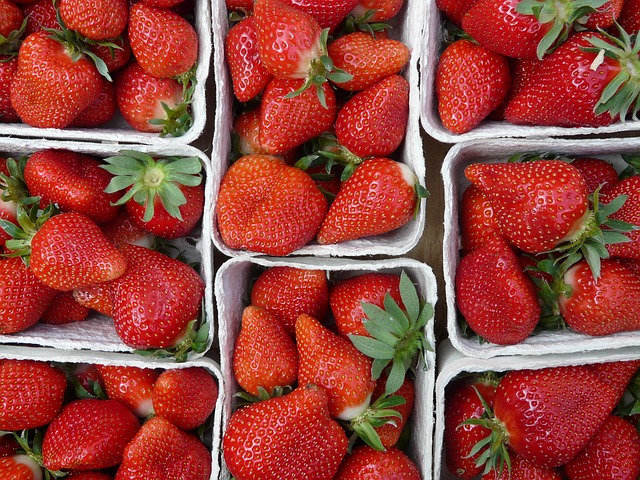| Fruits |
Vegetables
|
Strawberry, Fragaria vesca var. hortensis / Rosaceae
Postharvest Atmosphere Management

The quality marks for strawberries are linked to their appearance (colour, type, shape, free of any defect) and also to firmness, taste, scent and nutritional value. The optimal levels of moisture in storage range from 90 to 95%. The maturation criteria are based on the colour of the surface of the berry. At least 1/2 or 3/4 of the surface of the berry must be red or pink, depending on the maturity stage.
Pre-cooling is an essential process to maintain the quality of strawberries. The only case in which it is allowed to elude this technique is when they are consumed in 24 hours time after the harvesting.
The strawberries’ adaptability to conservation is scarce and they can only be stored from 5 to 7 days. For longer conservation, the temperature must be maintained at 0ºC and the relative moisture between 90-95% or even higher, both in storage as in transport. The deterioration is very fast once they are removed from the cold storage room.
Controlled atmosphere with a concentration of carbon dioxide around 10-15% reduces the growth of Botrytis cinerea and the strawberries’ respiration rate, thus increasing their post-harvest life. The application of this gas is used in the United States for transport over great distances.
Pre-cooling is an essential process to maintain the quality of strawberries. The only case in which it is allowed to elude this technique is when they are consumed in 24 hours time after the harvesting.
The strawberries’ adaptability to conservation is scarce and they can only be stored from 5 to 7 days. For longer conservation, the temperature must be maintained at 0ºC and the relative moisture between 90-95% or even higher, both in storage as in transport. The deterioration is very fast once they are removed from the cold storage room.
Controlled atmosphere with a concentration of carbon dioxide around 10-15% reduces the growth of Botrytis cinerea and the strawberries’ respiration rate, thus increasing their post-harvest life. The application of this gas is used in the United States for transport over great distances.
Distribution
Relative moisture during transport must be of 90-95% or even higher; temperature must be around 0 ºC. During transport, the use of small packing improves conservation.
Postharvest Problems
The physiological damages are not a serious problem for strawberries, maybe because they are sold very fast, due to their short period of life. However, damages caused by pathogensrepresent a real problem. Diseases are the main cause of losses in strawberries. Fungicides are not used in post-harvest. Therefore, fast cooling at 0ºC prevents from damages in the fruit. Shipping under high levels of carbon dioxide is one of the best methods to control them. The ideal thing would be to maintain injured strawberries away from the healthy ones.
The two most important types of rot affecting strawberries are those produced by Botrytis cinerea and the fungus Rhyzopus stolonifer. Botrytis cinerea is the most important disease affecting strawberries. This kind of rot is known as grey rot. The fruits are covered by a cottony mycelium and the tissues soften. It cause many post-harvest losses. This fungus continuous its growth over 0ºC, although it is very slow.
In the case of the second type of fungus, Rhyzopus stolonifer, its spores are usually circulating in the air and it is easily propagated. It causes a soft rot and the tissues loose their juice, that drips from the packages. This fungus does not usually grow at temperatures below 5ºC.
The two most important types of rot affecting strawberries are those produced by Botrytis cinerea and the fungus Rhyzopus stolonifer. Botrytis cinerea is the most important disease affecting strawberries. This kind of rot is known as grey rot. The fruits are covered by a cottony mycelium and the tissues soften. It cause many post-harvest losses. This fungus continuous its growth over 0ºC, although it is very slow.
In the case of the second type of fungus, Rhyzopus stolonifer, its spores are usually circulating in the air and it is easily propagated. It causes a soft rot and the tissues loose their juice, that drips from the packages. This fungus does not usually grow at temperatures below 5ºC.
| Interempresas Media, S.L. / 2025 | [ Legal notice | Política de Protección de Datos | Política de cookies | Publicidad] |
